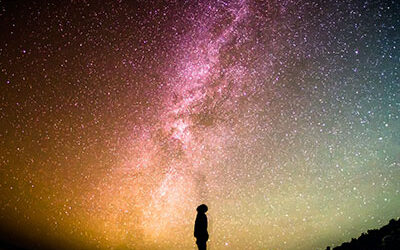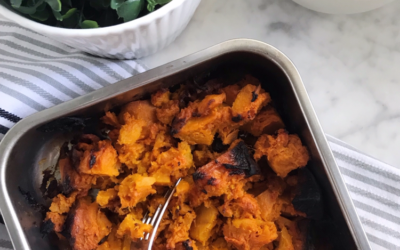![]()
by Joshua Canter

“…the element of community is one
of the greatest factors in healing…”
When I was 18 years old, I went through a period of searching. Often I would awake at night, my mind racing and continual thoughts flooding my consciousness. Questions would arise: “What am I doing with my life? Where are people like me? What is happening to the Earth? When will I understand?” With long nights of contemplation and meditation, the same answer kept arising, from a voice that began as a whisper then got louder and more insistent. The answer was “community.”
This personal realization catapulted me out into the world on a mission to explore community. I wanted to know, “Could community be the key to my searching in life? Could it meet the needs I haven’t been able to meet on my own?”
Dr. Marshall Rosenberg, the founder of Nonviolent Communication, talks about the core needs of all humans. He suggests that, in order to be healthy and fulfilled, humans must have “support and connection.” One of the key attributes of a life in community is the variety of ways in which we can help one another. Often our well-being benefits from reaching out to one another within the communities we are part of, whether family, church, neighborhood, or ecovillage. When we are in need, it is a true gift to have community available to help us.
Over the past 15 years, since I left Los Angeles, I have met numerous people with experiences similar to mine. They have all expressed feeling a void in their lives, and a need for the connection and support described by Dr. Rosenburg. They have all found that their personal needs could not be met solely by themselves, their spouse, or a couple of friends. They have realized that they need a community of people. Through my experience, I have discovered that when I have a network of community around me, I have the potential to truly flourish, to be healthy and fulfilled, and to nurture my well-being physically, emotionally, and spiritually.
In the early 1960s, Roseto, Pennsylvania, a small American town, became the focus of various medical studies. Roseto was a normal, run-of-the-mill small town. But within Roseto the people were found to be some of the healthiest in the country. Researchers found very low rates of heart disease and heart attacks, and no incidents of alcoholism or suicide. After various extensive studies, the researchers were surprised when the results of their tests showed that the high levels of wellness in the town came from nothing more than a strong sense of community.
Three years ago, my grandmother of 82 had a major stroke, which the doctors said would take her life. A few days after the stroke, we received a call in the middle of the night at my mother’s house. The doctor told us to hurry to the hospital, because my grandmother was going to pass. Our family rushed to the hospital, uniting in the Intensive Care Unit. As we entered the room with my grandmother, we created a semi-circle around her bed. I held one of her hands. My grandfather, on the other side of the bed, held her other hand. Together we breathed, sending healing energy and love to her. As we stood together as a family unit, the strongest community there is, her vitals began to pick up, and she came back to life. The doctors told us in the days following that it was only the power of the circle of family that saved her.
“Open your heart and mind to the healing power of community, and community will find you.”
Studies throughout the last half-century in the US have found similar results, proving that the element of community is one of the greatest factors in healing and healthy living. From heart disease to cancer, depression, and life longevity, all have shown significant positive effects when the patient has a network of community.
At the core of the human DNA we are 99.9 percent identical. Only a minute .1 percent difference separates us within our species. Through being part of community, we can learn more about the common vision of the human race, while exploring ways to work with the differences that at times can divide us. Community is a great tool to help us explore our emotional needs. In community we have a chance to look at ourselves and to see the reflection of others around us. Being in community is often represented by the metaphor of rocks in a river. Each person in the community is a rock, and through the process of being together, we rub against one another until we are smooth. Fifteen years ago, and numerous moments since then, I can remember being in a difficult time in my life. In each instance, the support and connection of others has lifted me up, given me perspective on my situation, and helped me grow from an experience of hardship. Joules Graves, an incredible singer/songwriter, says it best: “There is very little that separates Alone from All One.” At times, the .1 percent that separates the human race can seem more like 100 percent, but in the most difficult of times, when we need someone the most, our community is there to support us.
The Buddha, speaking thousands of years ago, described the sangha, “the spiritual community,” as one of the three most important elements in life. The sangha’s purpose is to be a pillar of support, displaying ways of being which encourage our dharma, our higher purpose in life. Within this philosophy, tsangha helps the community as they explore their well-being as a whole, while the sangha also supports each individual in exploring the spiritual self. For these reasons, spiritual communities are some of the strongest communities. From churches to synagogues, ashrams to monasteries, when people gather together to commune for a “higher purpose,” differences disappear, and a stronger force guides the community as one. A sense of connection to a whole, a community, a greater purpose outside oneself, can be the key to meeting spiritual needs in life.
Not only is community an important tool to help meet the needs of people, but the people are also the glue holding together the needs of the community. Over the years, I have discovered that “the people” in a community are the key to the success and well-being of the community itself. We can build a fully sustainable community that will support us, and if we do not have the tools to live and work together in harmony, we will not survive as a community. At True Nature, the intentional community where I live in Costa Rica, I notice this principle first hand. True Nature is located in a thriving environment, with various elements which support the sustainability and well-being of our community. Even with all of these elements, without the people in the community, and our commitment to healthy collaboration, our community would not exist.
Being part of community is a conscious choice we all can make. Community is all around us, even in places we might not expect it. The most important thing to remember is that “humanity” is here for you. We all have needs in this life and we are not alone. Open your heart and mind to the healing power of community, and community will find you.
Joshua Canter is an educator, facilitator, and consultant, whose mission is to support people interested in exploring and learning about the many facets of living in community. He is the cofounder of the True Nature Community and Education Center (truenaturecommunity.org) in Costa Rica. Through his work he hopes to help people discover how they can create ways of holistic living filled with connection, support, and interdependence. For more information contact Joshua: Joshua@truenaturecommunity.org.










0 Comments